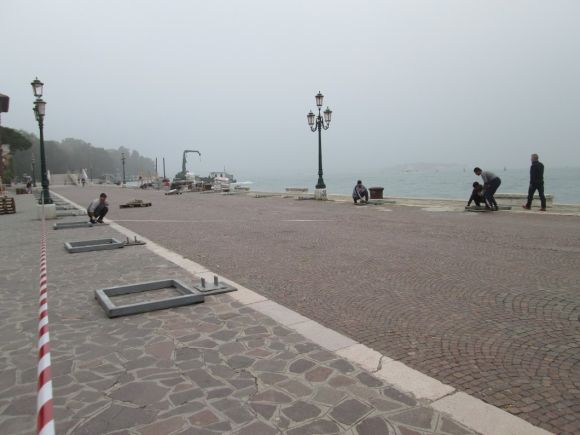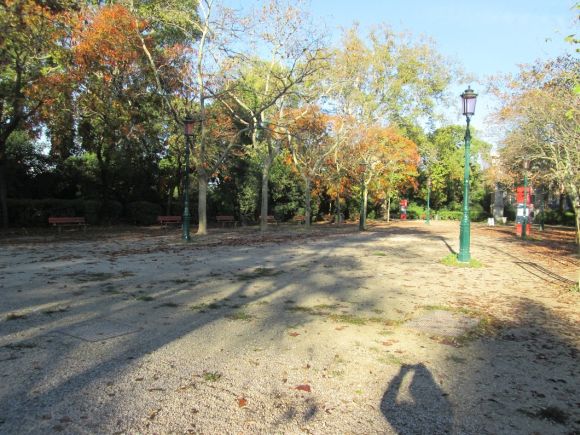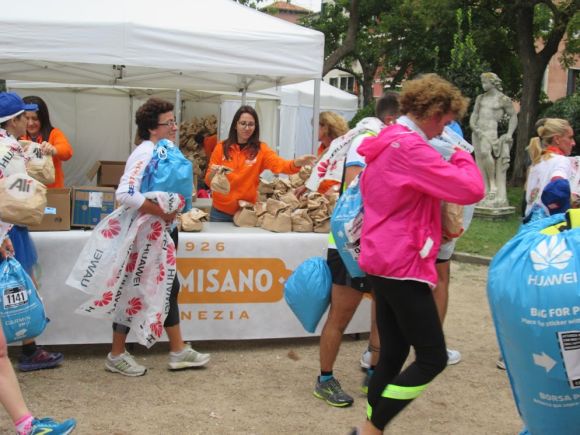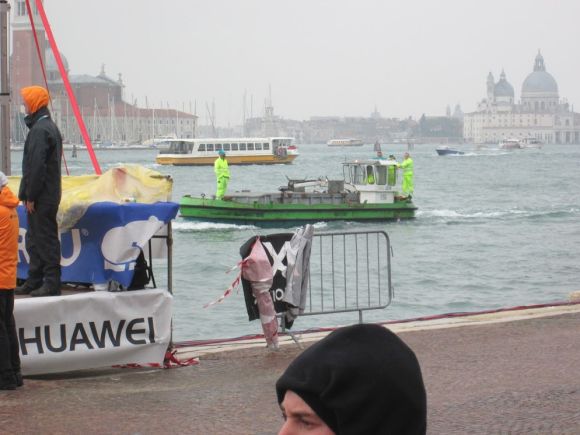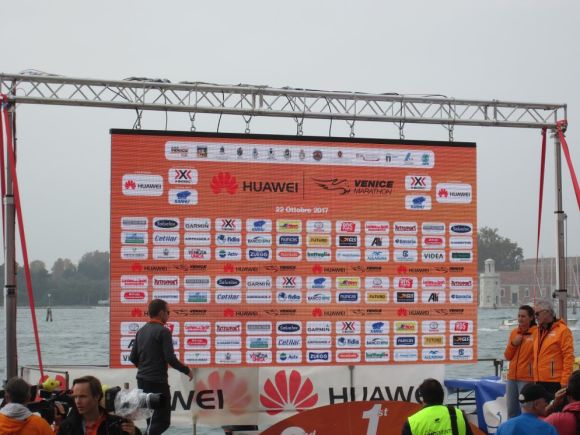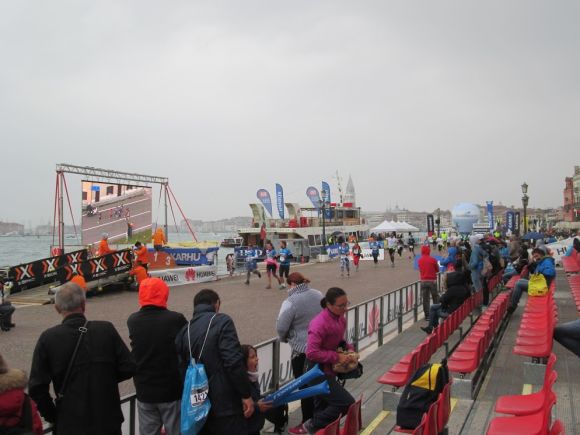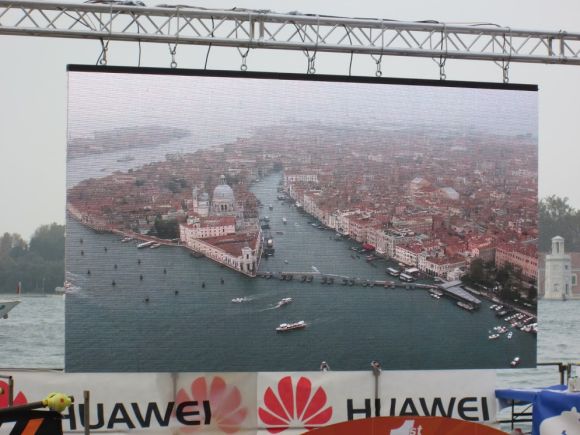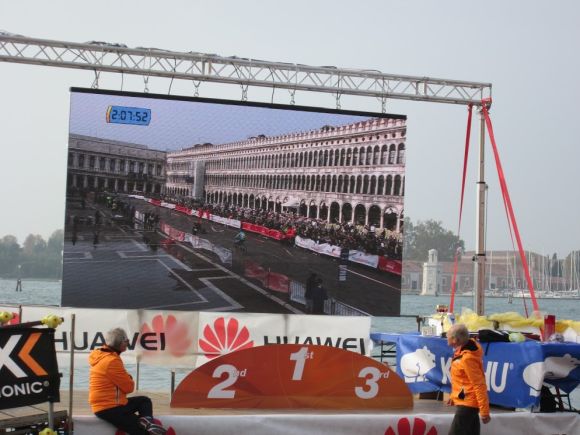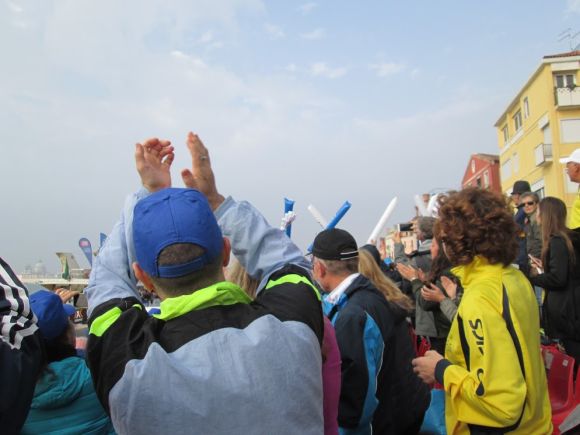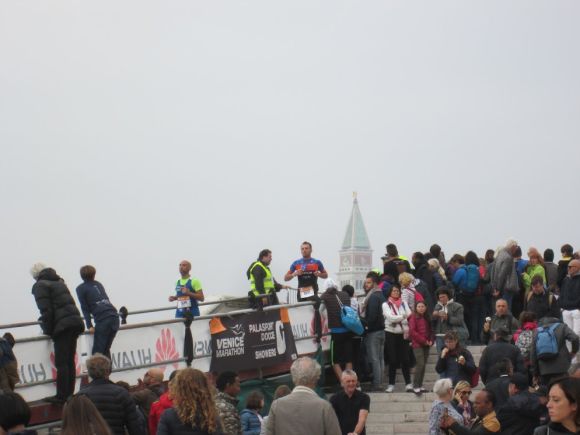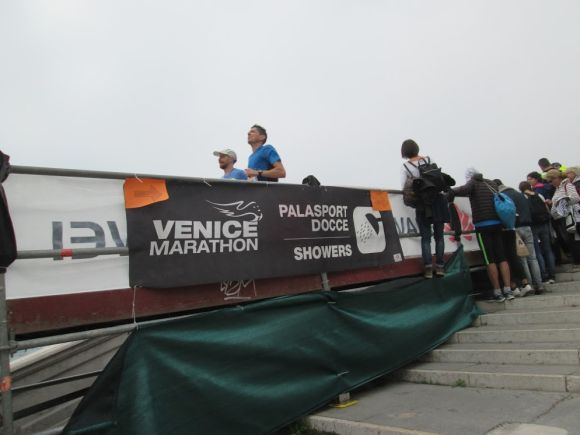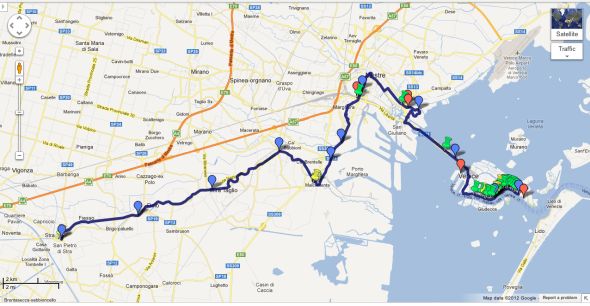
The classic foot race known as a marathon is generally predictable, from the distance (26 miles/385 yards or 42 km/195 meters) to the winner (so often an athlete from Kenya or Ethiopia or Eritrea). And why should the 32nd Venice Marathon, which was run last Sunday, October 22, have been any different?
Why indeed? That’s what people would really like to know.
Because in 31 years here no competitors in the lead have ever somehow taken the wrong road at the 16-mile point. And yet on Sunday there was a little peloton of East Africans who were some distance ahead of the 5,962 other runners. Abdulahl Dawud, Gilbert Kipleting Chumba, Kipkemei Mutai and David Kiprono Metto were following the motorcycle at the head of the race, as per normal, and when it turned right, going up the ramp onto the overpass leading to Venice, naturally they followed. Except that they were supposed to be on the highway below the overpass.
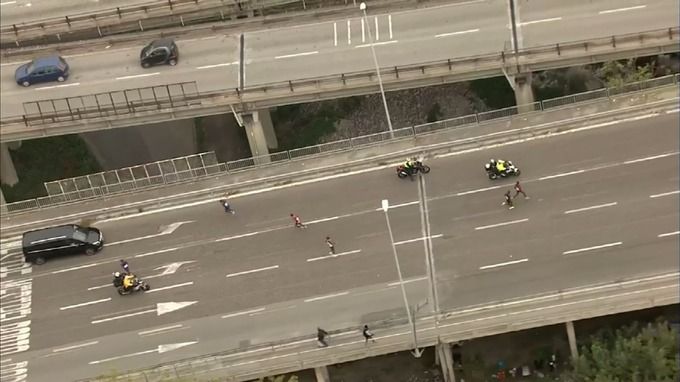

As two precious minutes ticked by, somebody else on a motorcycle caught up with them, yelling (I imagine) “What the hell, you guys? You’re supposed to be down there!” I imagine this because Lino and I were watching the live broadcast and you could easily see the men begin to turn around and trot back the way they came, no longer in the lead although still all by themselves, race essentially over. In fact, it was literally over; they withdrew immediately. One doesn’t run 26 miles/385 yards, or at that point one hour and 15 minutes, for the sheer euphoric joy of it. Who was responsible for that wrong turn? If you know, the world would like to hear from you. And so would the four runners.
As if we needed another problem, here it is: The winner, Eyob Faniel — who finished with an amazing two-minute lead over the rest of the pack — was born in Eritrea but is a naturalized Italian citizen and runs for the Venicemarathon Club. Fun fact: It has been 22 years since an Italian won the Venice Marathon. About time, you say? Somebody else might have been thinking the same thought. I’m not usually one for conspiracy theories, but the optics here, as the current expression has it, are not attractive.
Here is what Lorenzo Cortesi, general secretary of the Venice Marathon, has said (translated by me): “We need to evaluate if this was an error by the vigili urbani (a sort of local police), or by us. The service autos exited the barriers and the local police didn’t close the street. The motorcycles, then, weren’t able to transit the underpass.” (I totally do not understand this last bit. You want the people to run on a road that the motorcycle is forbidden to take?) “But I wouldn’t want the significance of this race to be limited only to this.” Of course you wouldn’t. Neither would I, if I were in charge.
But enough unpleasantness! Backpats generously administered by Signor Cortesi to the 2,000 volunteers involved, not to mention to everyone involved in the successful completion of all the unusual elements which the Venice Marathon requires: “Just think of the fact that we have to transport from the mainland to the arrival area, with 12 big trucks and 12 boats, the sacks of all the personal effects of the athletes.”
I can confirm that the organization was impressive as seen from ground level, from the chemical toilets to the bags of snacks to the massage tables with massagers waiting for massaggees.
But although the scaffolding and some bridges and the bleachers have all been removed, the questions refuse to go away. It used to be that everybody would be talking about how people ran. Now the only thing they’re talking about is where.
